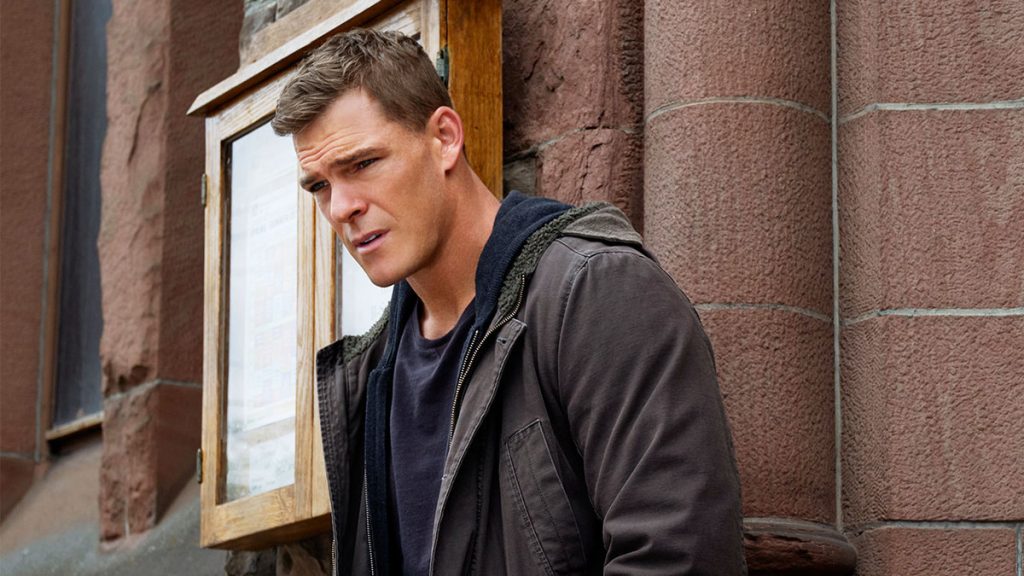- How To Do Foreshadowing Right In Your Screenplay (Part 1)
- How To Do Foreshadowing Right In Your Screenplay (Part 2)
“I know foreshadowing,” you’re thinking. It’s a simple enough concept.
True.
But maybe there are some things you don’t know about it or how best to use it.
Techniques
In its simplest form, foreshadowing is dropping hints about something that you will pay off later in a story. This is necessary for several reasons, suspense being one of them.
Hitchcock defined surprise as a bomb going off without warning. Suspense, he observed – and he knew suspense – was the audience being aware of that bomb ticking down to explosion. Without foreshadowing, there is no suspense – it’s just straight surprise. And while that may work for some things, having your protagonist pursue a goal without suspense is going to make your story as weak as re-used coffee grounds.
Playing Fair
A mentor taught me the first rule of foreshadowing: play fair. In many cases foreshadowing is used to alert the audience that a character is going to be a certain way or posses a certain skill.

Jack Reacher (Alan Ritchson) Photo courtesy Amazon Studios
In Reacher, the series, two things happen to intro the character and foreshadow how bloody cool he is. He stares down an abusive husband and without saying a word, cows the man into apologizing. That’s impressive. No violence, no threats – just those steely blue, no-nonsense eyes. Well, that and six four inches of massive muscle. And then, in the diner, about to eat his peach pie, he sees cops coming in hot. He frowns, pays for the pie, puts his hand s flat on the table, and waits for what he knows is inevitable – his arrest. We now know that he‘s been through this before – an uneasy relationship with the law that will play out the entirety of the series.
Reverse Foreshadowing
The series In The Dark is about a young blind woman who is also self-destructive. She’s also crap at being blind, somewhat deliberately, not getting any better at navigating her daily life. She is very self-reliant but disdains the common tropes.
COP
Right. ‘Cause your other senses are heightened.
MURPHY
That’s not a thing. I’m not Daredevil. I just smelled him.
This causes us to excuse a lot of her fumblings because she been reverse foreshadowed to be inept at being blind.
The Gun On The Wall
Attributed to legendary writer Anton Chekhov, the saying that basically if you put a gun in a story you must use it. This narrative principle can be reworked to say that if you introduce a gun in the story, you’re allowed to use it at some point. Meaning, it’s been foreshadowed.
There are several places where this type of foreshadowing comes into play.
James Bond films used to feature a half dozen devices that Bond would then use to solve a situation. Recognizing that this was more the tail wagging the dog, the last Bond movies subverted this trope and went away from it by limiting and also making gentle fun of it.
Bond meets Q at a museum and Q outfits him for the mission.
BOND
A gun and a radio? It’s not exactly Christmas, is it?
Q
Were you expecting an exploding pen?
We don’t really go in for that any more.
The sub-text here is that there won’t be a situation where Bond needs an exploding pen – he’ll have to find some other way to solve a problem.
Of course, he does get a tricked-out Aston Martin DB 5, so not all the Bond tropes are gone. He also use the gun and radio transmitter so the need to introduce them, foreshadow them, is necessary.
Magic
Foreshadowing is also necessary to establish the rules of your world. If magic comes out of nowhere and solves plot or scene problems it is so much less satisfying if it hasn’t been foreshadowed.

Wednesday Addams (Jenna Ortega). Photo courtesy Netflix
Wednesday has plenty of world building that needs foreshadowing to establish. Of course, any fan of the Addams family will know some of the world but Thing, Lurch, Pugsley, etc. need to be established and explained properly so we can enjoy this wicked little twisty show.
“What is he?” Wednesday is asked.
“We don’t know,” she says.
And truthfully, we don’t care. He is… Thing. That’s enough. And now that he’s been (un) explained (foreshadowed) we can just enjoy his antics.
Shock And Awe
In The Untouchables. in the opening scenes, we watch one of Al Capone’s men try to strong arm a bar owner into buying Capone’s whiskey. A little girl comes in while this is going on to have her father’s lunch pail filled with beer.
The thug relents when the bar owner continues to refuse the offer and on the way out, a look passes between him and a man somewhat out of place dressed in all white at the bar. The man in white (Frank Nitti) does something to a valise and also leaves. The little girl sees it, runs after him “Mister, you forgot your…“ and the bar explodes in a ball of flame.
The glance, the subtle gesture at the valise, the white suit, the little girl at the bar are all foreshadowing. The thug trying to sell the bar owner exudes danger but that’s a misdirection. The real threat is Nitti at the bar and we have to scramble to refocus in seconds to the new danger once we realize it. Somehow, master filmmaker Brian De Palma who was a student of Hitchcock’s techniques gets in both suspense and surprise in one powerful moment that also foreshadows Capone’s brutality.
Red Herring
The definition of a red herring is a device that creates a misdirection. They are normally used to misdirect a mystery. The writer points at a situation or person to take suspicion away from other situations or characters.
This technique was brought to a fine point in Sherlock Holmes where Watson was constantly misdirecting our assumptions. Foreshadowing comes into play by laying out all the cards on the suspect table but deliberately focusing on someone not the murderer using Watson’s narrative. The foreshadowing is that you as author are showing the audience the real killer – you’re not hiding anyone – so you’re ‘playing fair’ with the audience. Once the real killer is revealed you can go back, see the hints (foreshadowing) and just nod in appreciation because the writer didn’t hide anything.
In an episode of Kenneth Branagh’s Wallander, a body is found on Kurt Wallander’s new home’s backyard. It is among the blackcurrant berry bushes and for the entirety of the episode those bushes are mentioned and the farmer next door is shown. Both those bushes and the farmer are foreshadowed as being the cause of the body’s internment but not in the way we think. It’s really well done and the foreshadowing here is used to great effect.

